► Huge overhaul for Ford’s unloved crossover
► Refreshed look, interior and engine range
► We drive two iterations of the new Ecosport
So, the new Ford EcoSport. Since its launch in 2014, the EcoSport has been plagued with criticism for its questionable quality and even more questionable styling.
Thankfully, three years on and it’s been treated to a styling overhaul, an upgraded interior and a refreshed engine line-up to keep it competitive with the barrage of competition in one of the fastest-growing sectors in the business. Is it enough, though? Read our full review of the new Ford EcoSport to find out.
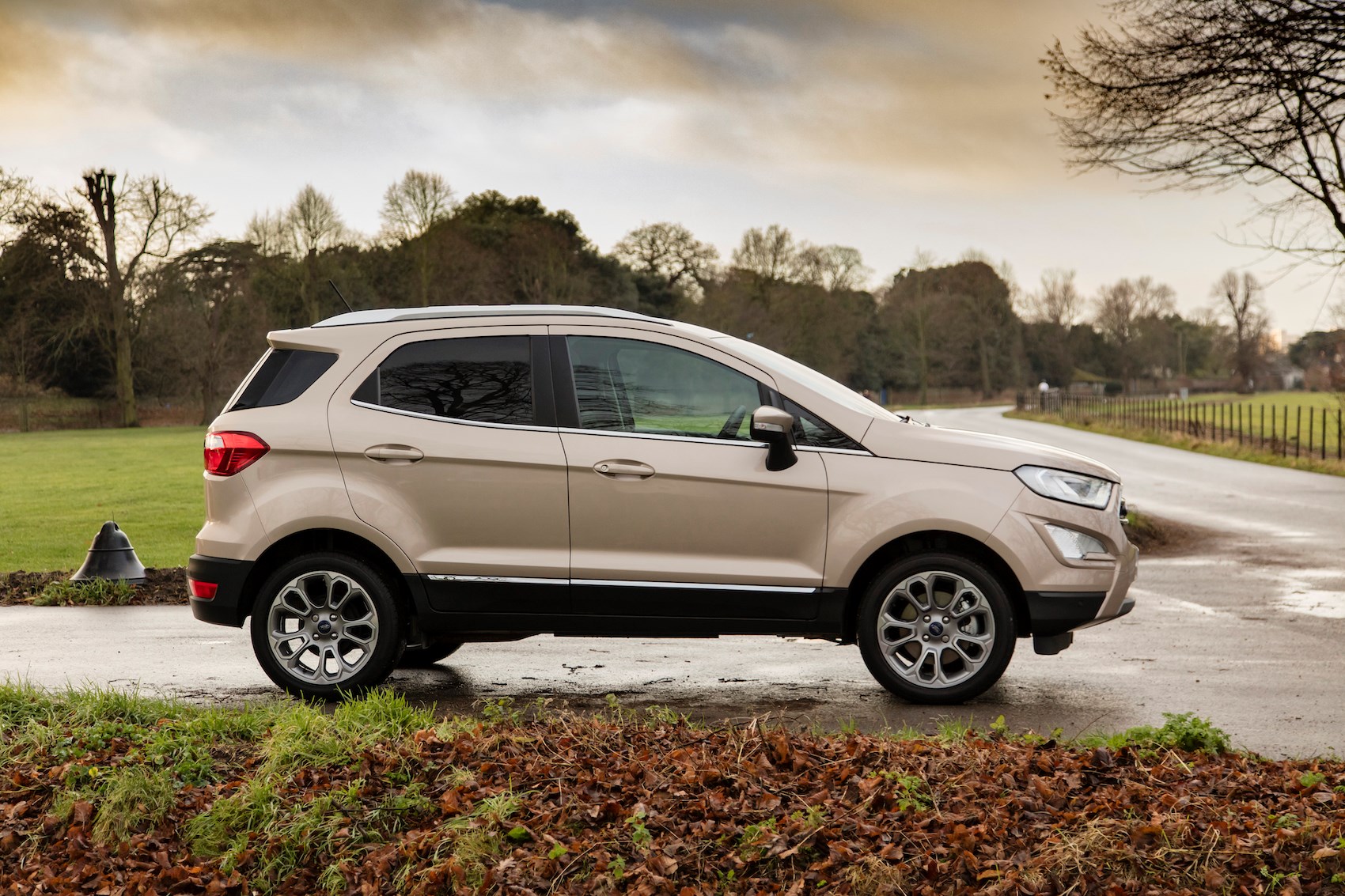
Ford EcoSport review: styling
The new Ford EcoSport’s higher-than-normal ride height means it looks like a rugged and up-for-anything kind of small SUV. Luckily, Ford has tweaked the basking shark nose of the old EcoSport with one that falls better in line with its other SUV models.
The new Ford EcoSport certainly looks more cohesive than before, and ST-Line models with contrasting body and roof colours are suitably striking – but then so are the Renault Captur, SEAT Arona and MINI Countryman among countless others that are also available with a range of colour combinations.
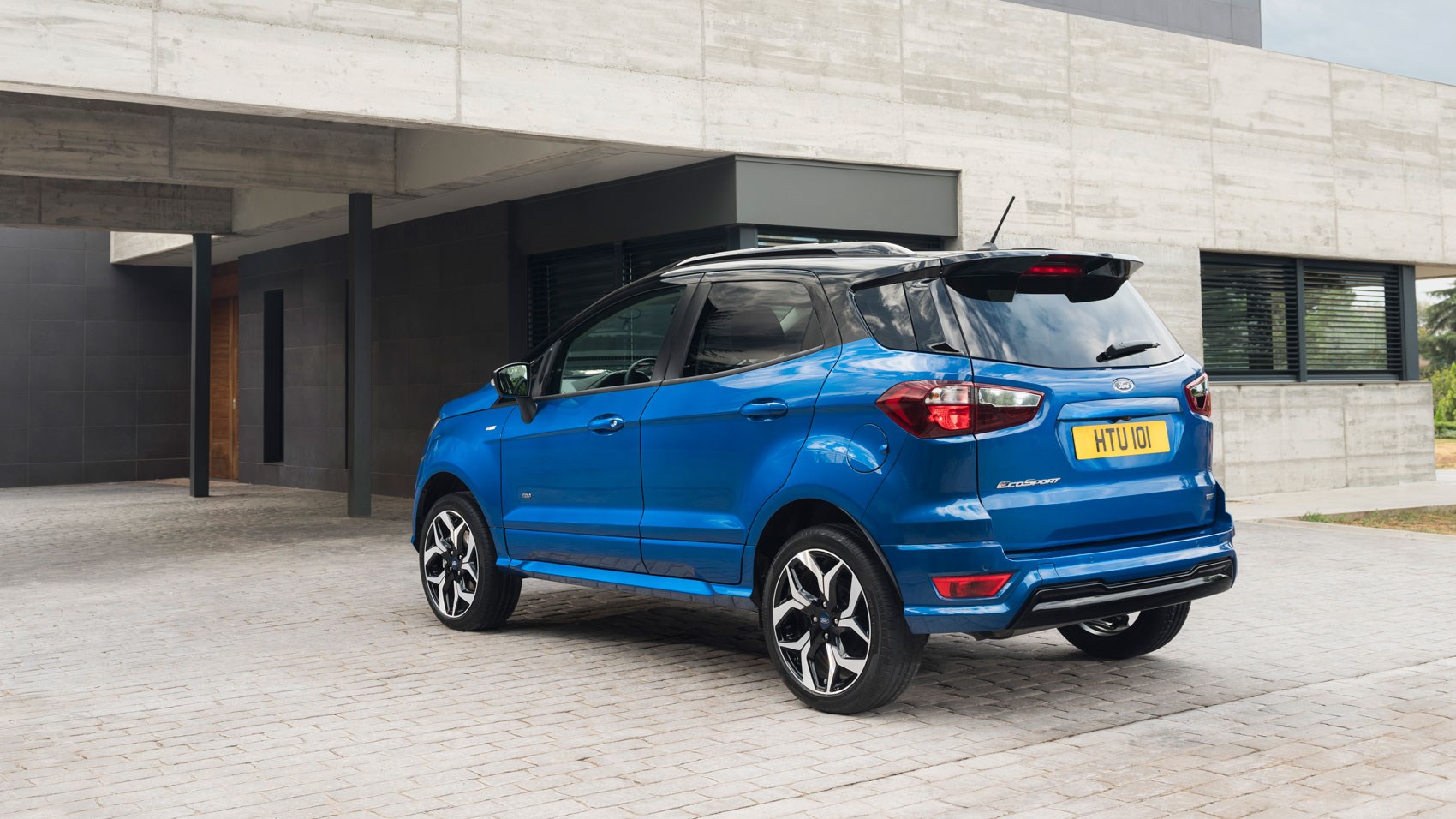
And while the EcoSport now looks a bit easier on the eye, the proportions are still a little awkward to these eyes. It still looks a bit too tall, a bit too narrow and a bit too boxy at the back, but there’s no denying the changes made to the exterior styling have improved the look of the car overall.
Ford EcoSport review: engines
At launch there are two familiar 1.0-litre EcoBoost petrols – 123 and 138bhp versions – and a 99bhp 1.5-litre TDCi diesel. Joining the range later in 2018 are a 99bhp EcoBoost and this new 1.5-litre EcoBlue diesel with 123bhp and Ford’s Intelligent AWD system.
It’s only expected to account for a small proportion of EcoSport sales (5%), but it’s a new engine and we thought it would be rude to not give it a go.
Initial impressions are positive – it’s a free-revving unit with enough shove to keep up with fast-moving traffic and for belting it up hills (after a downchange or two) due to a chunky 221lb ft of torque.
In fact, it’s the fastest EcoSport from 0-62mph with a time of 10.9 seconds. Okay, that’s not particularly rapid, but it feels eager to get going and it doesn’t get too rowdy unless you really push it hard, and we can’t imagine many EcoSport owners will be doing that…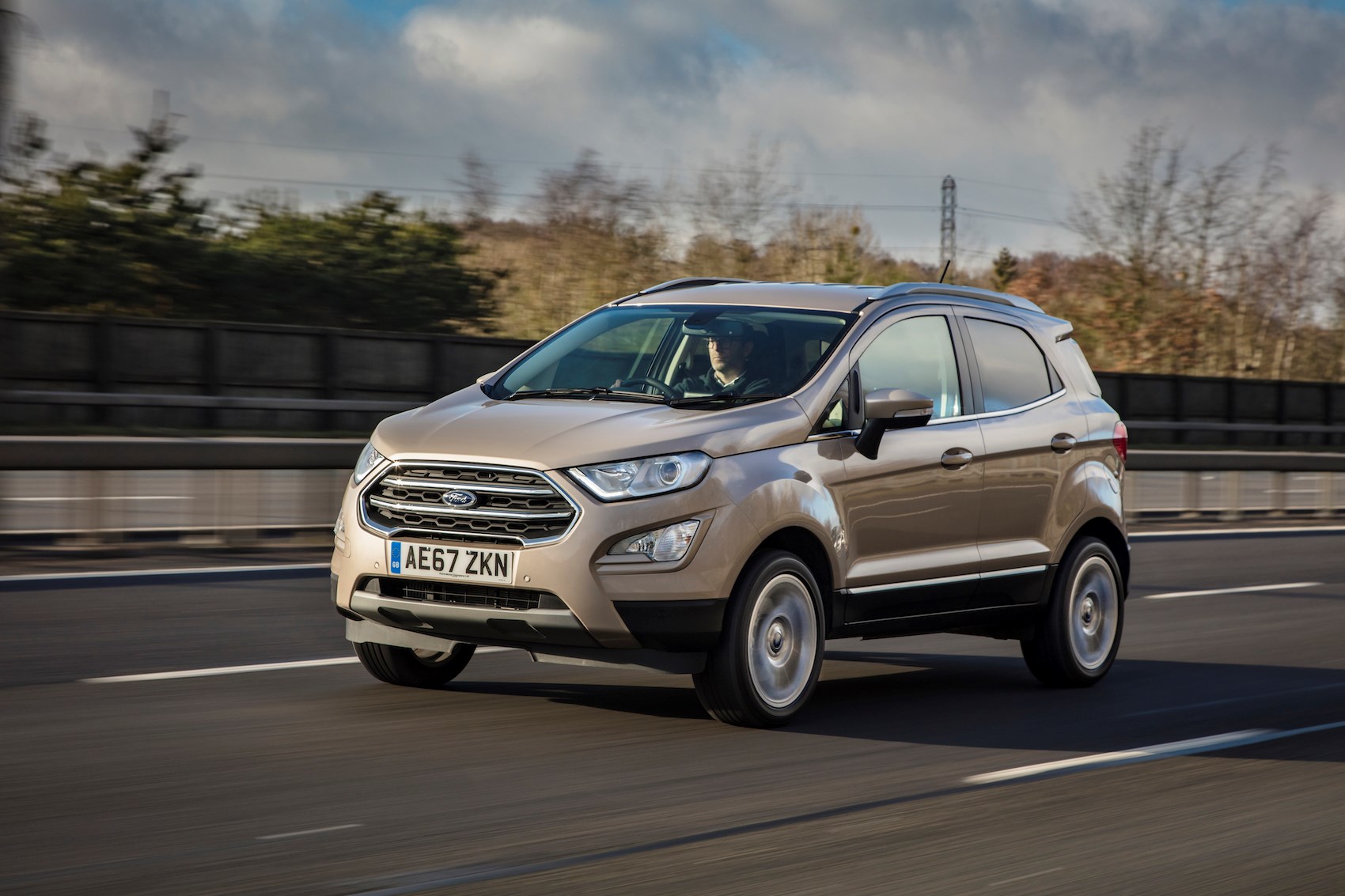
What about the other engines in the range?
That venerable Ecoboost remains the go-to choice in the Ecosport line-up. It spins up freely and has decent punch considering its diminutive capacity. Give it the beans and no matter which of the outputs you’ve picked, it’ll thrum eagerly towards the redline. This motor is one that lends the EcoSport some much-needed character, and it’s far more compelling than a small diesel for anything other than covering mega motorway miles – in which case you’ve bought the wrong car anyway. No wonder Ford expects to sell comparatively few DERV EcoSports.
We’ve had a chance to try the auto too – a six-ratio slushbox with paddleshifters for manual control. It’s fine, if you like that sort of thing, with smooth shifts and not a huge amount of lag on throttle inputs, but we much prefer the sweet shift action and control weights Ford does so well in its manual cars.
Our favourite motor in the line-up is – perhaps predictably – the sportiest drive in the range: the 140hp Ecoboost in ST-Line specification.
Ford EcoSport review: interior
A vast improvement. The old EcoSport’s Fiesta-derived interior felt dated and brittle, and was possibly one of the most disappointing things about it.
Luckily, Ford has nicked bits here and there from the new Fiesta, so there’s a new set of dials, a big, responsive touchscreen infotainment screen perched fashionably on top of the dash, new air-con controls and a tactile steering wheel.
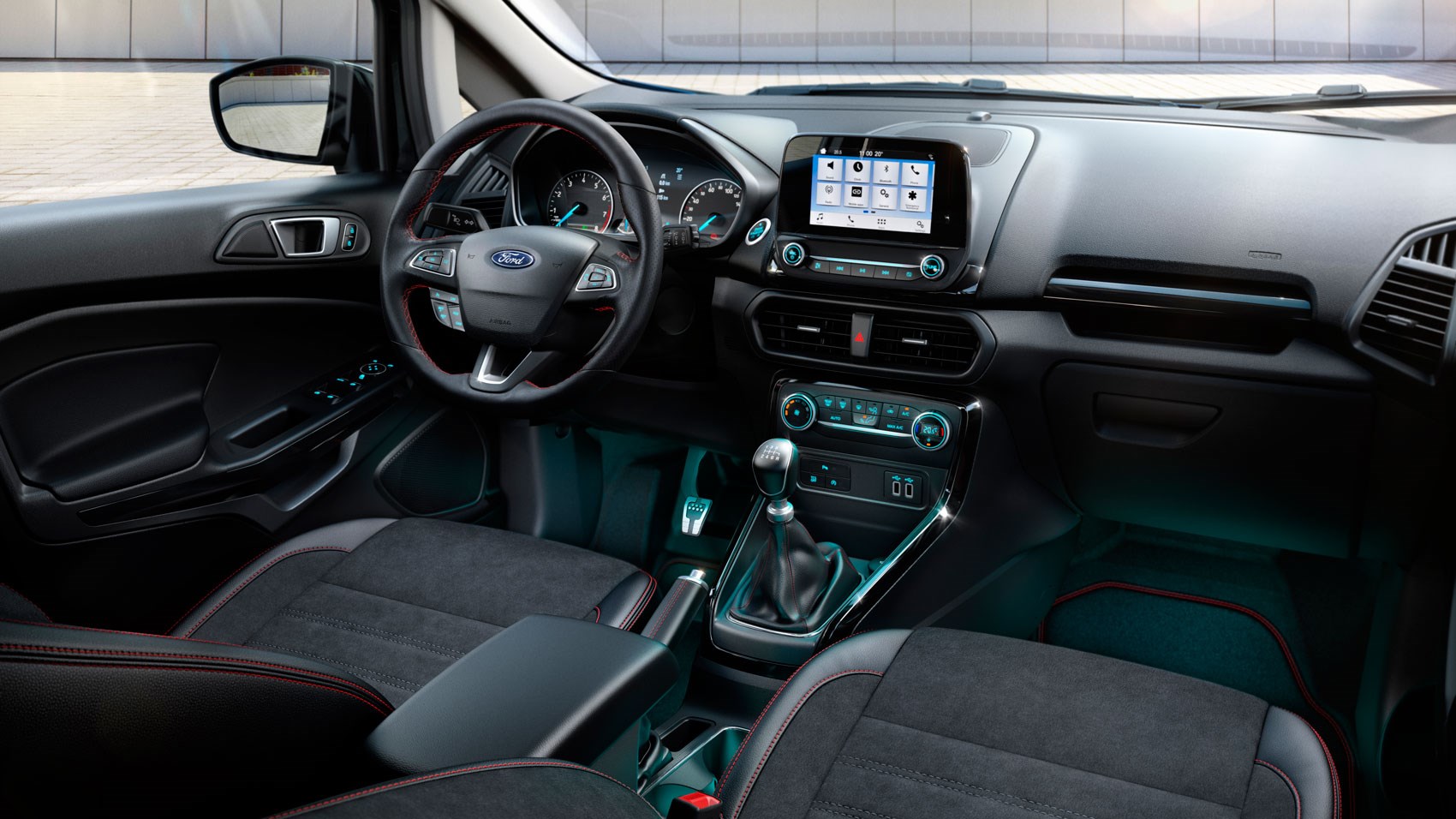
It’s a much more pleasant place to sit, with higher-quality materials used than before, although there are still some harder, scratchier examples to be found around the cabin. But then that’s also the case with the Fiesta and the SEAT Arona, so we won’t moan too much.
Space is adequate, if not amazing. You feel like you sit very high up (especially if you’re a passenger with no seat height adjustment) which helps with visibility, but then this is undone slightly by the enormous A-pillars restricting your view out of the front at junctions.
Ford EcoSport review: what’s it like to drive?
With a Ford badge on the front, there are high expectations of the EcoSport to drive well, and luckily it does a good job of keeping you fairly entertained on the move.
By no means is it as good as a Fiesta, but many other crossovers like these can feel dull to drive and leave you feeling detached; there’s a bit more involvement with the EcoSSport.
The steering is quick and direct with a decent amount of feel (but not tonnes of it) and grip in the bends is also fairly impressive. We didn’t drive hard enough to feel the AWD system come to the fore, but those with active lifestyles who surf, ski, hike, cycle and run all in one day might make more use of it than most.
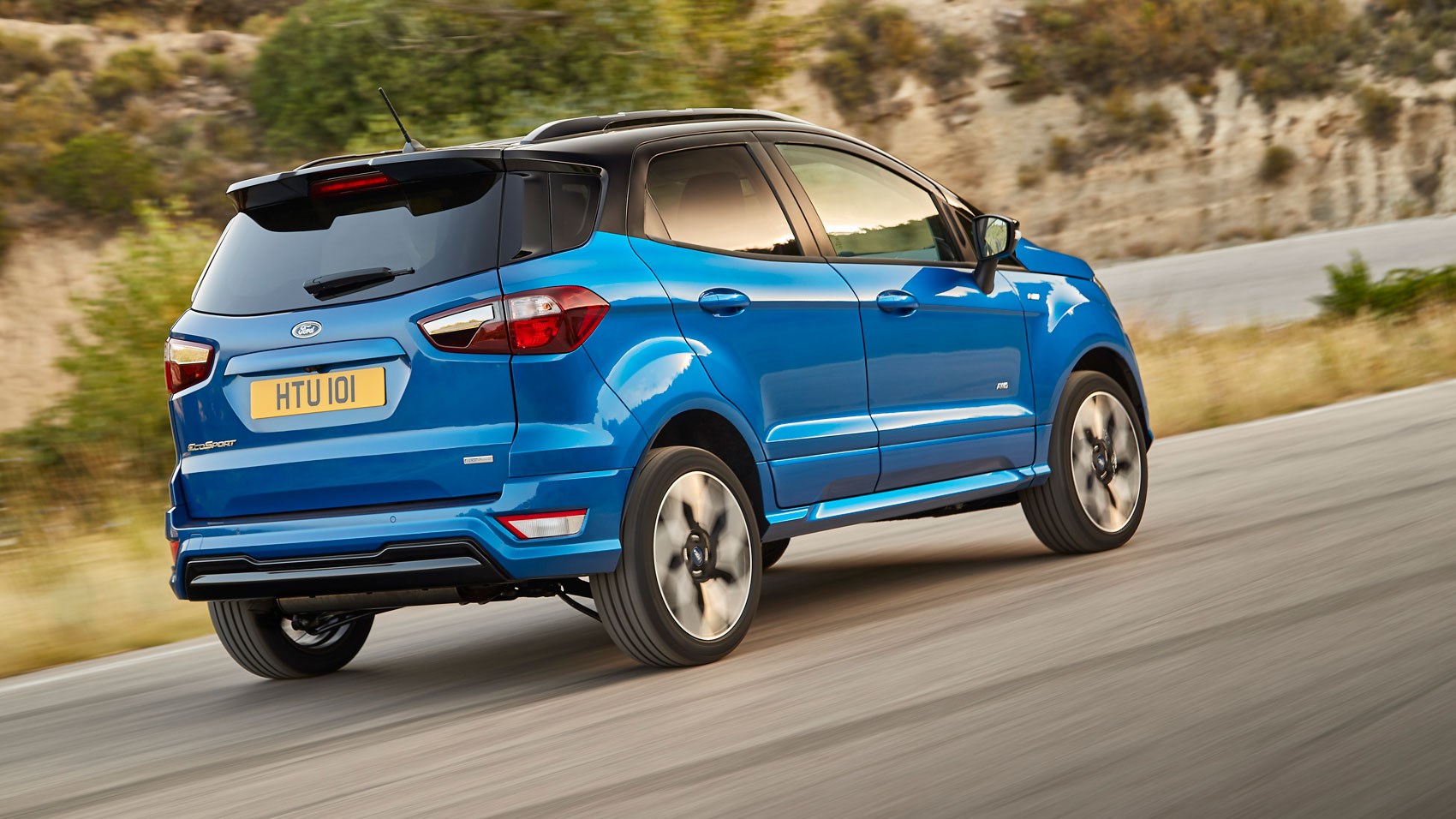
There’s no escaping that tall, narrow body though. You notice the body roll in bends, and ST-Line models with large alloy wheels at each corner of the car is a recipe for a fidgety ride. Around town it never really calms down and could become tiring – it was never uncomfortable and wasn’t as noticeable at speed. It feels more balanced than many other small SUVs.
Ford EcoSport review: verdict
The EcoSport is now much easier to recommend than it was before. It looks better than it did, has a nicer interior and comes with a good range of engines.
However, that doesn’t quite feel enough to push it to the top of the class. The SEAT Arona feels a much more accomplished all-rounder, while the Hyundai Kona offers an equally involving drive (and manages to look wacky and quite cool at the same time) and the C3 Aircross looks more cohesive as a tall and narrow SUV.
It’s better, but still not the best.
Check out our Ford reviews